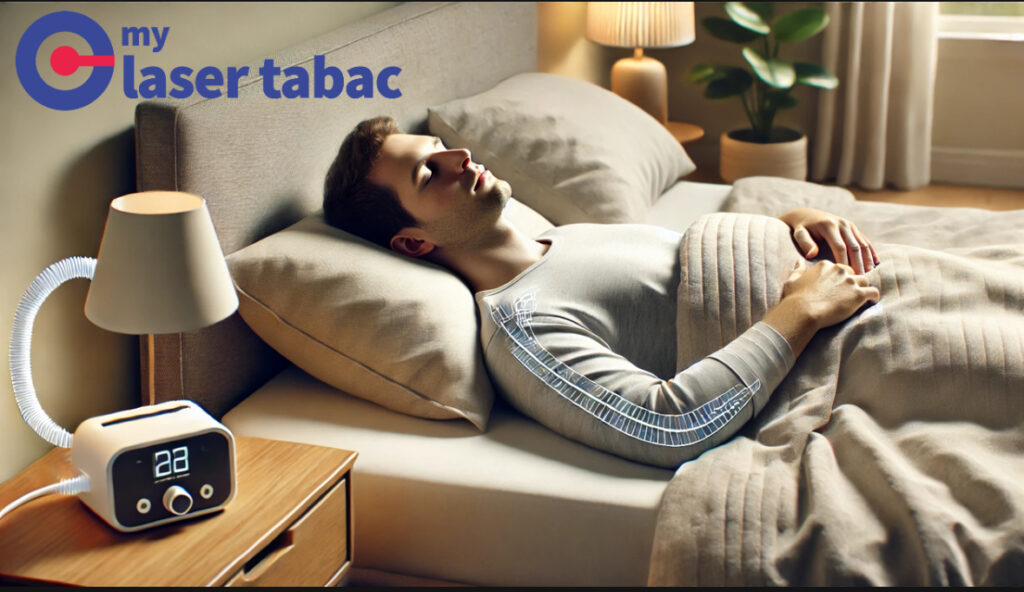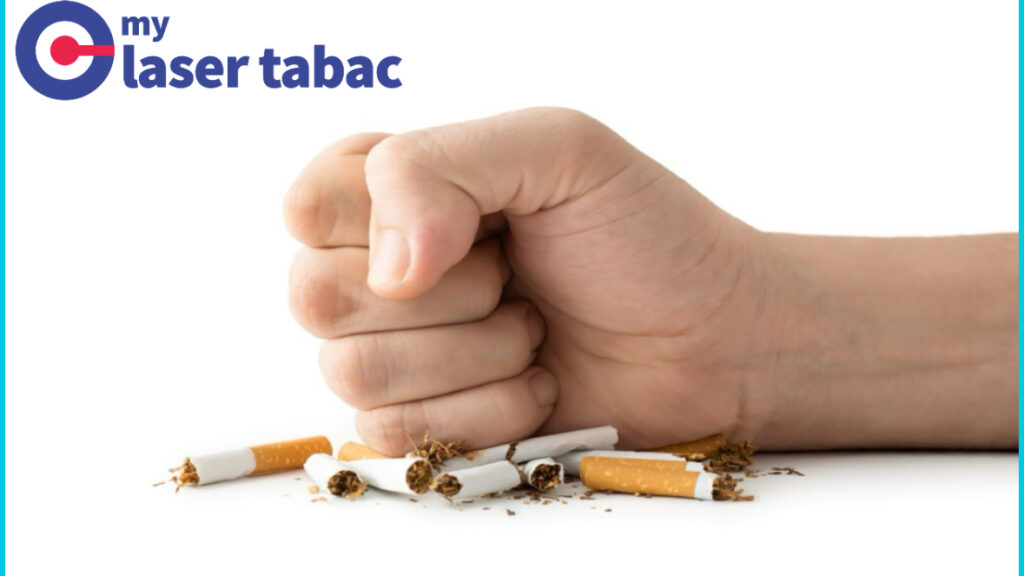Tobacco and sleep disorders
Tobacco is well known for its harmful effects on health, but did you know that it can also aggravate sleep disorders, in particularobstructive sleep apnea (OSA )?Sleep apnea is a respiratory disorder that causes breathing to stop frequently during the night, disrupting sleep quality and leading to serious health threats. Numerous studies have shown that people who smoke are at greater risk of developing obstructive sleep apnea (OSA ), a common form ofmomentary cessation of breathing during sleep. In this article, we’ll explain how smoking affects this sleep disorder, and why it’s important to consider natural methods like the anti-smoking laser to stop smoking.

What is sleep apnea?
Definition and symptoms of sleep apnea
Nocturnal respiratory arrest is characterized by repeated pauses in breathing during sleep. These interruptions, known as apneas, can last from a few seconds to over a minute, and are repeated several times an hour. This disorder often leads to snoring, frequent awakening and poor sleep quality. Symptoms of sleep apnea include :
- Noisy, regular snoring
- Daytime sleepiness (drowsiness during the day)
- Frequent awakenings with a feeling of suffocation
- Concentration and memory problems
- Fatigue and irritability on waking
Types of sleep apnea
There are several types of sleep apnea, the most common of which is sleep-disordered breathing (SDB). This occurs when the airway is partially or totally blocked during sleep, often due to a relaxation of the throat muscles. Other types includecentral apnea andmixed apnea.
The link between smoking and sleep apnea
How tobacco influences sleep-disordered breathing
Smoking has a direct impact on sleep quality and increases the risk of developing momentary cessation of breathing during sleep. Here’s how smoking contributes to the worsening of this disorder:
- Inflammation of the airways: Cigarette smoke irritates and inflames the airways. This inflammation leads to narrowing of the respiratory passages, increasing the likelihood ofobstruction during sleep.
- Increased mucus production: People who smoke produce more mucus than non-smokers, which can obstruct the airways and lead to apnea and snoring at night**: Tobacco and nicotine can disrupt sleep rhythms and affect throat muscle relaxation, increasing the frequency and severity of obstructive respiratory arrest.
You might also be interested in: What are the Natural Alternatives to Smoking Cessation?
The issues and consequences of sleep apnea in smokers
People suffering from these sleep symptoms are at increased risk of serious illness. Untreatedsleep hypoventilation can lead to cardiovascular disorders, high blood pressure, diabetes and other chronic diseases. In addition, people who smoke are more likely to suffer from persistent snoring and sleep dysfunctions, which have a negative impact on their overall healthand may also adversely affect their bedtime partner.
According to studies, cigarette addicts are twice as likely to suffer fromsleep apnea as non-smokers. The combined effects of smoking andsleep hypopnea on heart rate and blood pressurecan be extremely dangerous, increasing the severity of symptoms.

The effects of smoking cessation on sleep apnea
Improved sleep quality
Smokingcessation reduces airwayinflammation and mucus production. These changes help to improve sleep quality and reduce the frequency of obstructive sleep-disordered breathing.
By reducing the effects of nicotine, the body returns to a more natural sleep rhythm, helping to combat nocturnal respiratory problems.
Quitting smoking reduces apnea symptoms
Quitting smoking reducesirritation of the airways, making them more open and less prone toobstruction during sleep. It also reduces the symptoms of other respiratory diseases and helps patients breathe more easily at night, improving their quality of life.
You might also be interested in: Does smoking increase the risk of developing type 2 diabetes?
The role of laser therapy in smoking cessation
Anti-smoking laser: a natural and effective solution
Laser therapy is a smoking cessation method that uses a gentle laser to stimulate specific auricular points, based on the principles ofauriculotherapy. The method is non-invasive, drug-free and has no side effects. By stimulating the production of endorphins, the anti-smoking laser helps to reduce cravings and withdrawal symptoms, making withdrawal easier.
The benefits of anti-smoking measures
- Gentle, non-invasive: laser treatment requires no drugs or chemicals. It is therefore natural and safe.
- Reduced stress and anxiety: By acting onauriculotherapy points, the laser helps calm withdrawal symptoms such asanxiety and sleep disorders.
- Proven effectiveness: many patients have successfully quit smoking thanks to the anti-smoking laser, reducing their risk of developing respiratory deficiencies such as sleep hypopnea.
At MyLaserTabac, we offer a personalized program to help smokers free themselves from their nicotine dependency. Our laser therapy method is recognized worldwide as one of the safest and most effective solutions for smoking cessation. By quitting smoking, you not only reduce the risks associated with smoking, but also improve your quality of sleep and your overall health.
Quitting smoking for better sleep
Tobacco has a profound impact on sleep quality and can aggravate disturbances such asmomentary cessation of breathing during sleep. Smokers wishing to improve their health and quality of life should consider fighting tobacco and turning to natural stop-smoking solutions. The anti-smoking laser offered by MyLaserTabacis an effective, gentle and natural way of saying goodbye to cigars withoutthe side effects of conventional substitutes.
Contact us today to book an appointment and find out how the anti-smoking laser can help you quit smoking and improve your quality of sleep.
